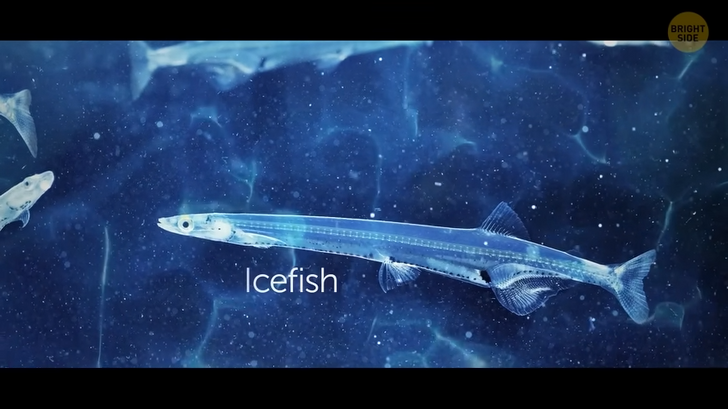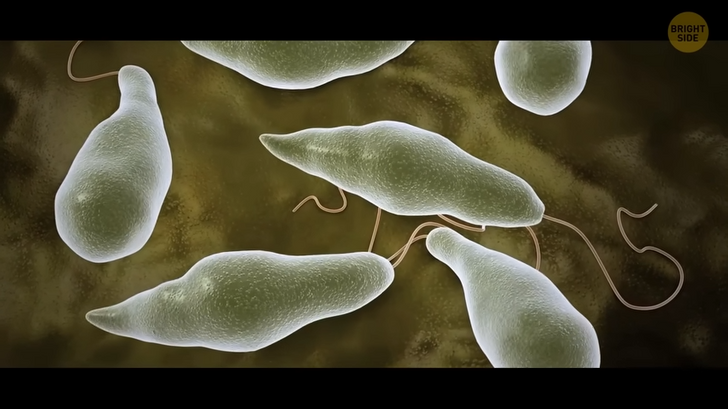12 People Whose Life Has More Twists Than a Telenovela

It’s winter, 1980. We’re in the small town of Lengby. 19-year-old Jean Hilliard is driving home after meeting with a friend. She takes a shortcut and turns to an icy, slippery road. In the dark, she loses control of the rear-wheel drive car. The vehicle crashes into a ditch.
Emergency lights, snowfall, night, and a hard frost. Jean gets out of the vehicle. She’s wearing only a light winter coat, mittens, and cowboy boots. The air temperature is much lower than in a freezer. Jean is sure that her friend lives nearby, so she goes that way.
She climbs a high hill and realizes she’s taken the wrong route. It seems she’s got lost. The girl wanders a couple more miles and notices her other friend’s house in the distance. Freezing, she walks there; then everything turns black. Jean loses consciousness.

The next morning, rancher Wally Nelson wakes up in a great mood. It’s the holiday season! There’s a winter fairy tale outside the window. He leaves his house and notices the body of Jean Hilliard lying just a few feet from his porch. Wally approaches the girl, shakes her, and is horrified.
Her body is stiff and cold like frozen wood. Her eyes are open and don’t move. Her hair has frozen. She just doesn’t look alive. But Wally sees that she’s still breathing. Jean has managed to survive! Wally wants to put her in his car to bring her to the doctor. But the girl’s body doesn’t bend and can’t fit into the auto. It feels like a statue. He takes a bigger car and rushes to the hospital as fast as possible.
The doctors take Jean, but they don’t think she has any chance to make it. Her hand is so hard and frozen that no needle can penetrate it. A low temperature, glassy eyes, and muscles as hard as stone are all the results of “emergency mode.” Her body has directed all the blood to the vital organs to ensure their functioning. That’s why other parts of her body look so lifeless, and her skin and muscles don’t react to anything.
The doctors decide to put heating pads on the girl to warm her up. Her family hopes for her recovery. But right now, all they can do is just wait. Frostbite is so dangerous because all that frozen liquid begins to expand. Fill a small bottle with water and put it in a freezer for a few hours. Then take it out, and you’ll see that the bottle seems to have expanded or even cracked because of the increased volume of the liquid.

The same thing happens inside our bodies. We consist of almost 70% water. When it freezes, its particles turn into ice crystals and tear cell membranes. Ice fragments can stretch and destroy tissues. This is called frostbite.
Also, our body can slow down all internal processes in extreme cold conditions to save strength and energy. The heart makes fewer beats, and the lungs stop consuming a lot of oxygen. Metabolism slows down. It happened with Jean, and perhaps it was what saved her life that day. She was lying in the snow in severe frost for about 6 hours. But why didn’t ice particles start destroying her cell membranes? How did her body withstand such damage and manage to survive?
Back at the hospital, doctors are happy to watch Jean get better. Warm blood spreads through the frozen vessels and brings her body back to life. Surprisingly, ice crystals haven’t damaged her muscles and skin. A few hours later, the girl regains consciousness. By noon, she starts talking. Jean doesn’t know what happened. She remembers walking to her friend’s house and then waking up in the hospital.
What worries her most right now is that her father’s car is somewhere in a ditch. As it turns out, the girl fell down and crawled on all fours to Wally Nelson’s house. She doesn’t remember it, but, apparently, her brain activated the survival instinct that night. Unfortunately, she didn’t manage to crawl the last few feet. Jean passed out at the door and stayed there for 6 hours.

Doctors examine the girl and understand that she’s completely healthy! Soon, she’s discharged from the hospital. This case isn’t unique. One professor of emergency medicine, David Plummer, said he’d seen about 12 similar cases over the past 10 years when patients had survived severe frostbite. Jean returns home and finds out that she has become famous.
People write about her in newspapers, want to interview her, and film documentary shows. Her case has attracted the attention of many doctors around the world. But no one has been able to find out exactly how she managed to survive. In the case of humans, such recoveries seem like an absolute miracle. But many creatures of the natural world can adapt their bodies to extreme conditions. One of them is the tree frog.
These animals live mainly in temperate and tropical parts of Eurasia. Sometimes they have to contend with cold weather. Their body injects glucose into the bloodstream when they feel they’re freezing. And the content of their cells turns into syrup. Sugar lowers the freezing point of water. So, tree frogs have adapted to such conditions. The water outside their cells can freeze. Their bodies can get as hard as ice cubes. But they will be alive, feeling great.
Then, when it gets warmer, they fully recover — the blood fills their body and puts all their muscles in motion. But one of the most amazing animals that can withstand freezing temperatures is the Ghoulish Icefish. It’s transparent and somewhat like a jellyfish. It swims in the dark, cold Antarctic waters. The Ghoulish Icefish feels comfortable there because of the antifreeze in its blood. More precisely, it’s a unique substance that is like antifreeze in its functions.

This liquid doesn’t allow the animal’s cells, organs, and the whole body to freeze. There are no red blood cells in the fish’s blood that transport oxygen throughout its body. This is the only vertebrate with such a superpower. There are organisms on our planet that use the cold to prolong their life.
Scientists have found some of them in the ice of Siberia. Those are microscopic multi-celled creatures like small worms that can live in a freezer for about 10 years. But the worms from Siberia were about 24,000 years old.
The scientists transported them to the laboratory and thawed them. The worms came to life and began to multiply immediately after all those centuries of sleep. Their bodies can go into cryptobiosis. This is when an entirely frozen organism has minimal vital functions. The analysis showed that the worms could stay in this mode for tens of thousands of years.

And there are many such animals on our planet. Also, these creatures are some of the world’s most resistant to radiation. They are practically invulnerable. But back to our story.
It’s possible that Jean Hilliard’s body went into short cryptobiosis. Perhaps, there was some non-freezing liquid in the girl’s blood. But no one knows for sure. These days, she has an ordinary job and almost doesn’t remember that day. Further research on this topic can help scientists create special medicines that can help in freezing temperatures.
Just imagine that you could safely go outside in the winter wearing a T-shirt and a pair of shorts. Steam would be coming off your body, and the ice under your feet would be melting. You’d feel hot inside. A dream, perhaps. But realistically...winter coat manufacturers would, of course, never allow it.











